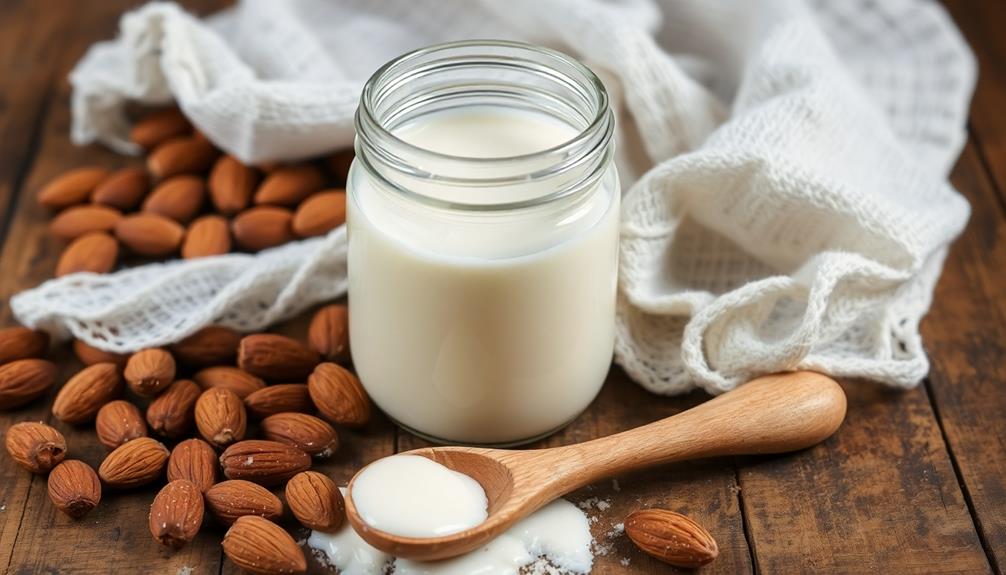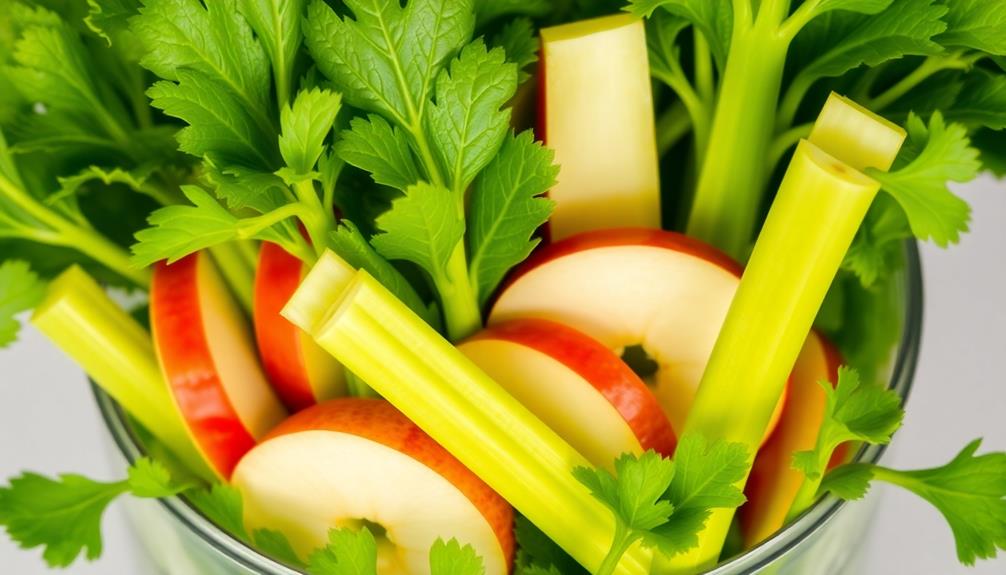Ready to unlock the delicious secrets of raw almond milk? This creamy, nutrient-rich beverage has been enjoyed for centuries, dating back to ancient times in the Middle East and Asia. You can easily make your own at home by soaking and blending raw almonds with water, then straining out the pulp. Not only is homemade almond milk free from additives, but you can customize the flavor with spices or sweeteners. It's a wonderfully refreshing and versatile dairy-free option – perfect for smoothies, baking, or simply sipping on its own. And if you keep reading, you'll discover even more about the rich history and amazing benefits of raw almond milk.
Key Takeaways
- Raw almond milk is a nutritious, dairy-free beverage made by blending soaked almonds with water, providing essential nutrients like vitamin E and healthy fats.
- Homemade almond milk is free from unwanted additives or preservatives, offering a fresher and more customizable taste compared to store-bought varieties.
- The almond pulp leftover from the milk-making process can be repurposed in baked goods or smoothies, reducing food waste.
- Almond milk can be stored in the refrigerator for up to 4 days and easily incorporated into various recipes, including smoothies, coffee, and baking.
- Preparing raw almond milk at home not only ensures a high-quality product but also enhances kitchen skills and knowledge about plant-based dairy alternatives.
History
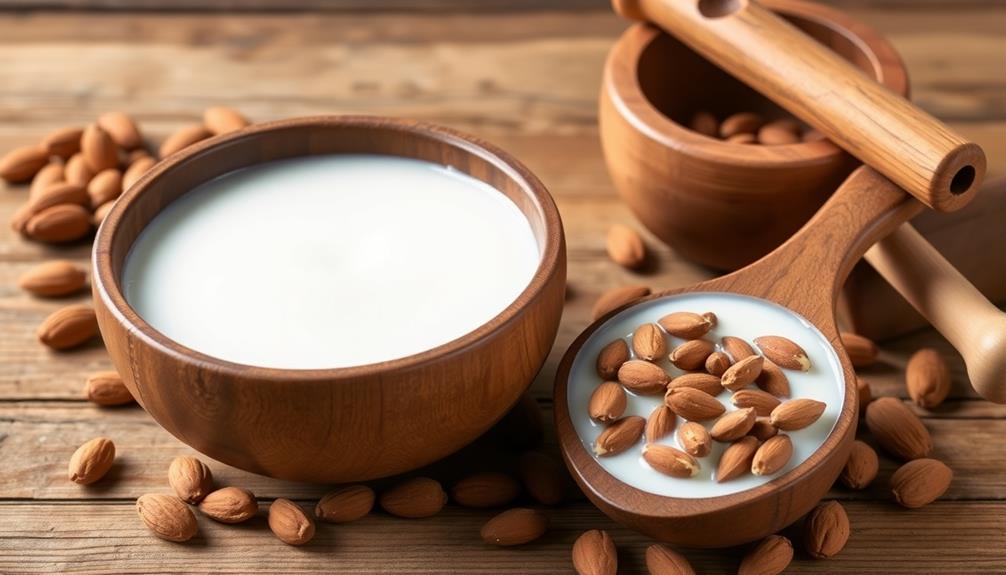
Almond milk has long been a staple in various culinary traditions across the globe. In fact, this nutritious and delightful beverage dates back to ancient times, with records showing its use in the Middle East and Asia as early as the 13th century. Back then, people would hand-grind almonds and mix the resulting paste with water to create a creamy, plant-based milk.
Similar to herbal teas, almond milk is often embraced for its health benefits, including being a source of antioxidants and its potential role in promoting overall wellness health benefits of herbal teas.
Over the centuries, the popularity of almond milk spread to Europe and the Americas, becoming a beloved alternative to dairy for those with lactose intolerance or dietary restrictions. As technology advanced, the process of making almond milk became more efficient, allowing it to reach even more people around the world.
Today, raw almond milk continues to be embraced for its versatility, health benefits, and rich, nutty flavor. Whether you're enjoying it in smoothies, baking, or simply sipping it on its own, this ancient elixir remains a treasured part of many culinary traditions.
Recipe

Raw Almond Milk is a refreshing and nutritious dairy-free alternative that can be easily made at home. This simple recipe requires just a few ingredients and minimal effort, making it a convenient and healthy choice for those looking to incorporate more plant-based options into their diet.
Almond milk isn't only delicious but also packed with essential nutrients, such as vitamin E, magnesium, and healthy fats, which can provide hydration support due to high water content. By making it yourself, you can control the ingredients and avoid any unwanted additives or preservatives found in store-bought varieties.
- 1 cup raw almonds
- 4 cups filtered water
- Pinch of salt (optional)
To make raw almond milk, simply soak the almonds in water for 8-12 hours, or overnight. Drain and rinse the soaked almonds, then add them to a high-speed blender along with the fresh water and salt (if using). Blend on high speed for 2-3 minutes until the mixture is smooth and creamy.
Strain the almond milk through a nut milk bag or fine-mesh strainer to remove any pulp. Store the raw almond milk in an airtight container in the refrigerator for up to 4 days.
It's important to note that the almond pulp left behind after straining can be saved and used in various recipes, such as baked goods or as a nutrient-dense addition to smoothies.
Experiment with different flavors by adding vanilla extract, cinnamon, or a touch of maple syrup to the almond milk. Enjoy this homemade raw almond milk as a refreshing beverage, in your morning cereal, or as a dairy-free base for your favorite recipes.
Cooking Steps
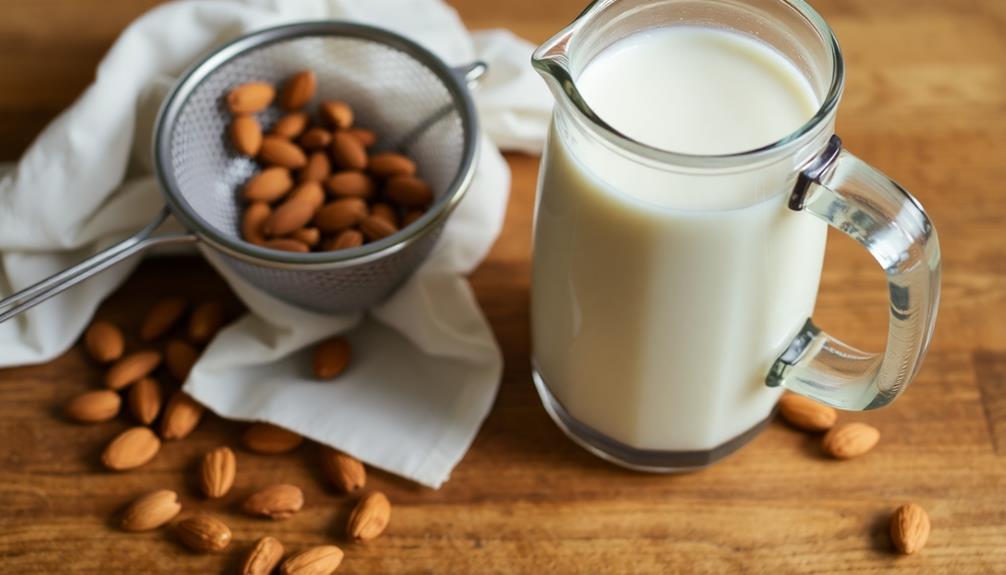
First, you'll need to soak the almonds overnight. This helps soften them so they'll blend up nice and smooth.
For an even creamier texture, consider using a high-quality blender designed for making top-notch beverages.
Next, grab a cheesecloth and use it to strain the almond mixture, getting rid of any leftover nut bits.
Finally, pop everything into the blender and whiz it up until it's super creamy.
Transfer the finished almond milk to a storage container and pop it in the fridge to chill.
Step 1. Soak Almonds Overnight Before Blending
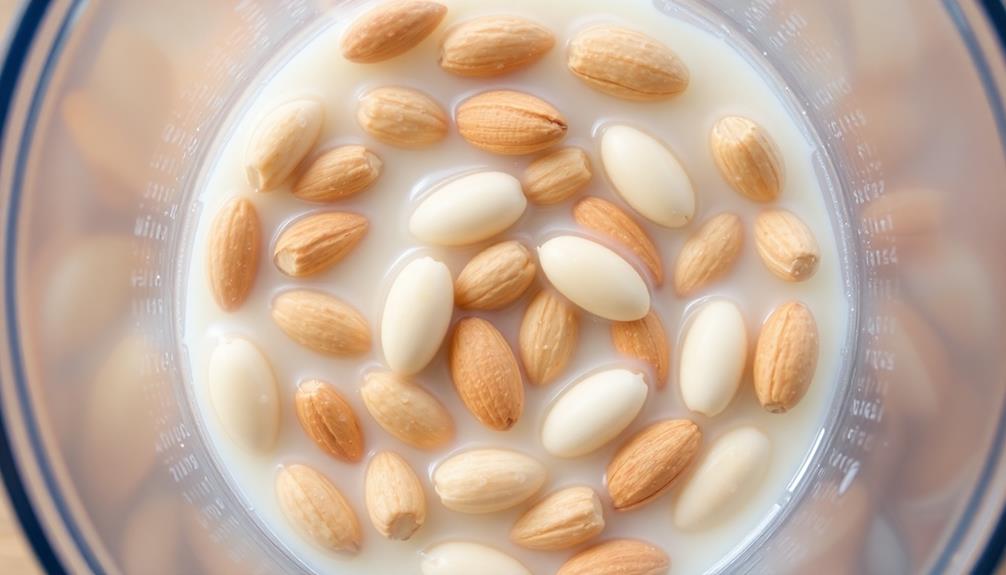
Kick off the process by soaking the almonds overnight. This easy step helps soften the nuts, making them easier to blend into a smooth, creamy milk later on.
Simply place the raw almonds in a bowl, then cover them with clean water. Let them soak for at least 8 hours or overnight. This gives the almonds time to absorb the water, plump up, and become more easily blended.
When you're ready to make the milk, drain and rinse the soaked almonds. They should feel soft and a little squishy between your fingers.
Discard the soaking water, as it may contain tannins or other compounds you don't want in your final product. With the almonds prepped, you're all set to move on to the next step – blending them into a delicious raw almond milk!
The soaking makes a big difference, so don't skip this important first part.
Step 2. Strain Almond Mixture Through Cheesecloth
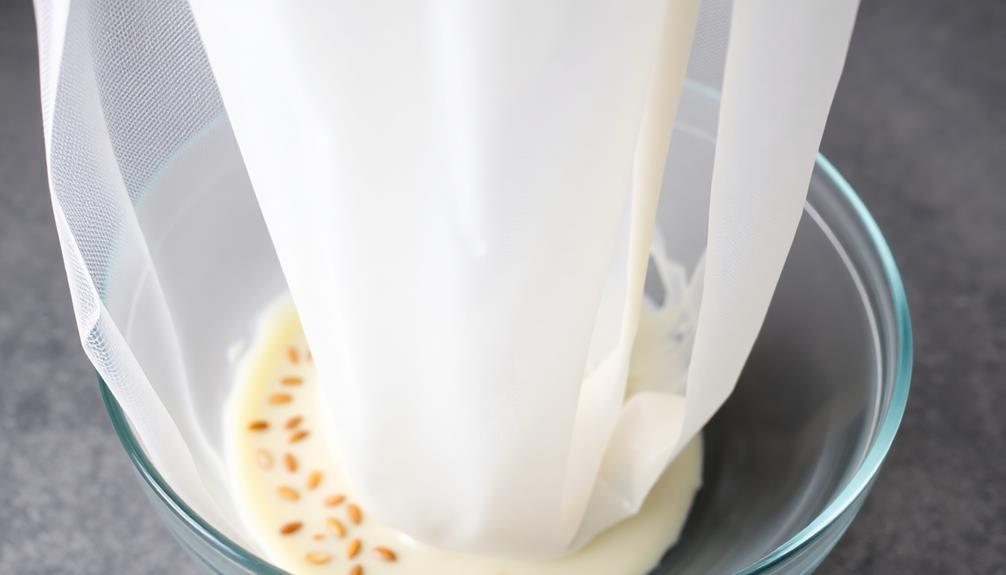
With the almonds prepped, it's time to strain the almond mixture through cheesecloth. This step is crucial to separating the creamy almond milk from the almond pulp.
Grab a large bowl and line it with a clean, damp cheesecloth. Carefully pour the blended almond mixture into the center of the cheesecloth, letting the liquid slowly drip through. You might need to gather the edges of the cheesecloth and give it a gentle squeeze to help the milk flow.
Don't worry if some small almond bits make their way through – that's perfectly normal! Once you've strained all the liquid, you'll be left with a soft, fluffy almond pulp in the cheesecloth.
Save this for another recipe, like homemade almond flour or as a tasty addition to baked goods. With the almond milk now strained, you're one step closer to enjoying your own freshly made, raw almond milk. Wasn't that easy?
Step 3. Blend Almond Mixture Until Smooth
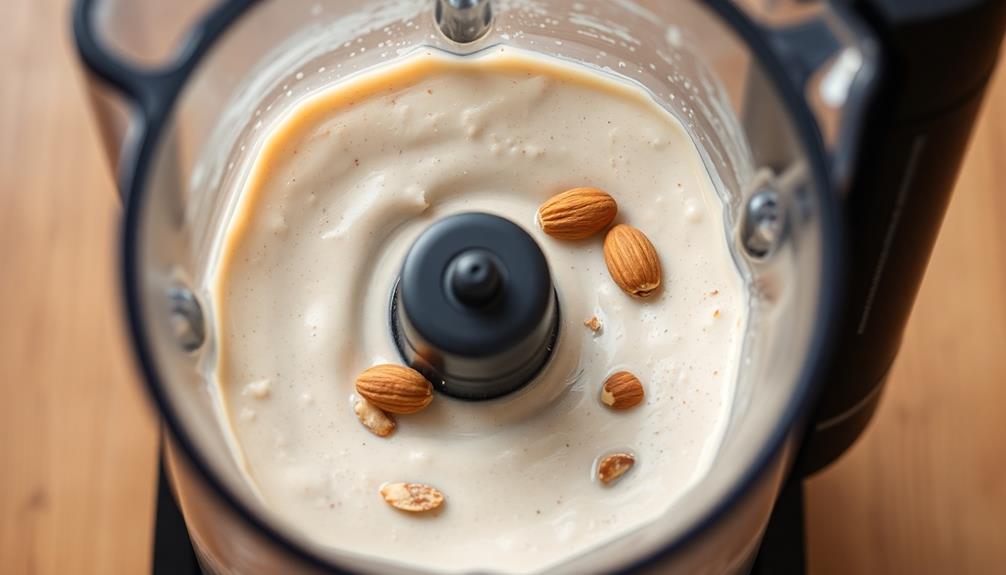
Once the almonds are soaked and drained, the next step is to blend the almond mixture until it's smooth and creamy.
You'll want to grab your trusty blender and give it a good whirl. Start on a low speed and gradually increase the power until the mixture becomes silky smooth. Don't be afraid to stop and scrape down the sides if needed – you want to make sure everything gets nicely incorporated.
Now, you might be wondering, "How long should I blend it for?" Well, that can vary a bit depending on the power of your blender, but aim for around 1-2 minutes of blending.
You'll know it's ready when the mixture has a lovely, velvety texture. If it's still a bit chunky, just keep blending until it reaches your desired consistency.
And voila! Once it's all blended up, you're one step closer to enjoying your very own homemade raw almond milk.
Isn't that exciting? Now you can use it in all sorts of delicious recipes or just drink it straight up. The possibilities are endless!
Step 4. Transfer to Storage Container
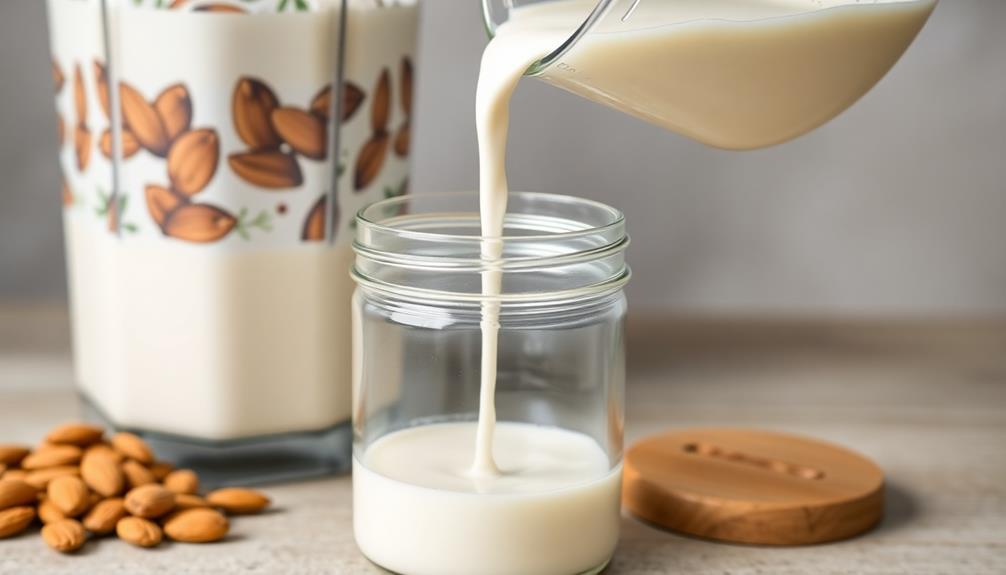
After blending the almond mixture until it's smooth and creamy, you'll want to transfer it to a storage container. This is an important step, as it'll keep your fresh, homemade almond milk nice and fresh.
Grab a clean, airtight container – a mason jar or pitcher works great. Slowly pour the blended almond milk into the container, being careful not to spill. Once it's all in, give the container a gentle shake or stir to ensure everything is well combined.
Now, you can pop the lid on and store your almond milk in the fridge. It'll stay fresh for 3-5 days, so you'll want to enjoy it within that time.
When you're ready for a delicious almond milk treat, just give the container a shake to remix the ingredients, then pour and enjoy! The smooth, creamy texture and nutty flavor will make it worth the little bit of effort.
Homemade almond milk is a healthier, more eco-friendly alternative to store-bought, plus it's fun to make yourself.
Step 5. Refrigerate Finished Almond Milk
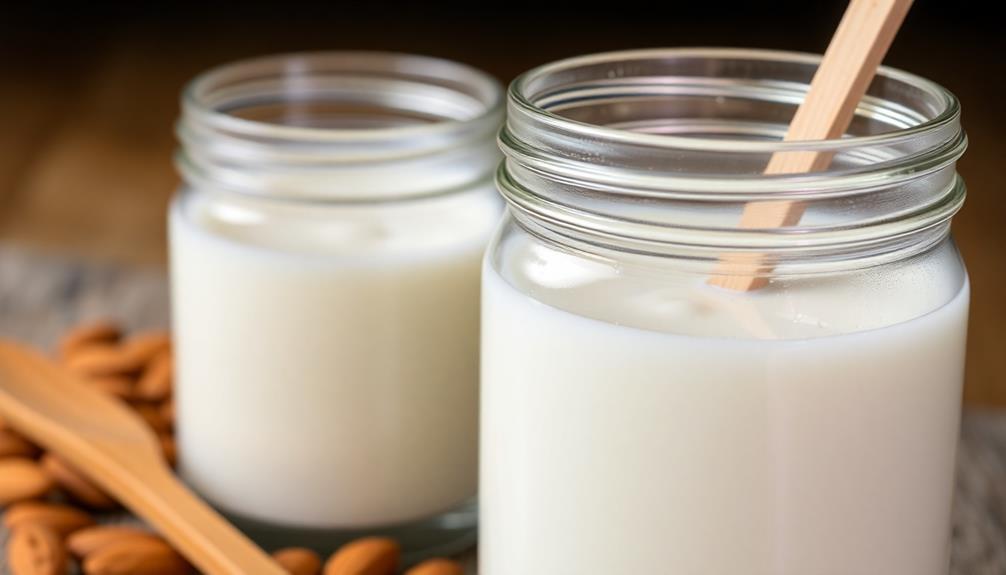
Now that you've transferred the smooth, creamy almond milk to a storage container, it's time to refrigerate it. This is a crucial step to keep your delicious homemade almond milk fresh and ready to enjoy.
Simply pop the container in the fridge and let the milk chill for at least 2 hours before serving. The cold temperature will help preserve the milk's flavor and texture.
You'll want to store it for up to 4 days in the refrigerator. Whenever you're ready for a refreshing glass, just give the container a gentle shake to remix the milk. The almond milk may separate a bit as it chills, but a quick shake will blend it back together nicely.
Refrigerating your almond milk is the final step before you can start sipping and savoring your homemade creation. Enjoy the smooth, creamy taste anytime by keeping it chilled and ready to go in your fridge.
Your taste buds are in for a real treat!
Final Thoughts

In the end, making your own raw almond milk is a rewarding process that yields a fresh, creamy, and nutrient-dense beverage.
You'll love the satisfaction of creating something so delicious and healthy right in your own kitchen. The best part? It's really not as tricky as it might seem. With just a few simple steps, you can have a pitcher of smooth, creamy almond milk ready to enjoy.
Plus, you'll know exactly what's going into it – no weird additives or preservatives, just pure, wholesome ingredients. So why not give it a try? Homemade almond milk is a game-changer, and you'll be amazed at how much better it tastes than the store-bought stuff.
Plus, you can experiment with different flavors and get creative. Overall, making raw almond milk is a fun, rewarding, and nutritious process that's well worth the small effort. Enjoy!
Frequently Asked Questions
How Long Does Homemade Almond Milk Last in the Fridge?
Homemade almond milk typically lasts 3-4 days in the fridge. It's best to consume it within this timeframe for optimal freshness and flavor. Proper storage in an airtight container will help extend its shelf life.
Is Almond Milk Gluten-Free?
Yes, almond milk is gluten-free. Since it's made from almonds, which are naturally gluten-free, you can enjoy almond milk without worrying about consuming any gluten. It's a great dairy-free and gluten-free alternative to traditional cow's milk.
Can I Use Almond Milk in Baking Recipes?
Yes, you can use almond milk in baking recipes. Almond milk is a great dairy-free alternative that can be substituted for regular milk in many baked goods, providing a similar consistency and flavor without the lactose.
How Much Protein Does Almond Milk Contain?
Almond milk is generally low in protein, containing around 1-2 grams of protein per cup. This makes it a less suitable substitute for dairy milk in recipes that rely on the protein content for structure and binding.
Is Almond Milk Suitable for Lactose-Intolerant Individuals?
Yes, almond milk is suitable for lactose-intolerant individuals. Since it's made from almonds and doesn't contain any dairy, it's a great alternative to cow's milk for those who are lactose-intolerant or prefer a plant-based milk option.

